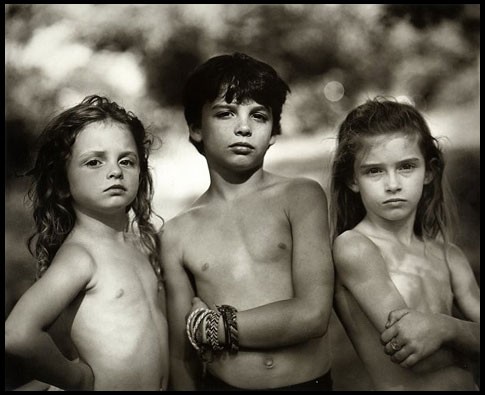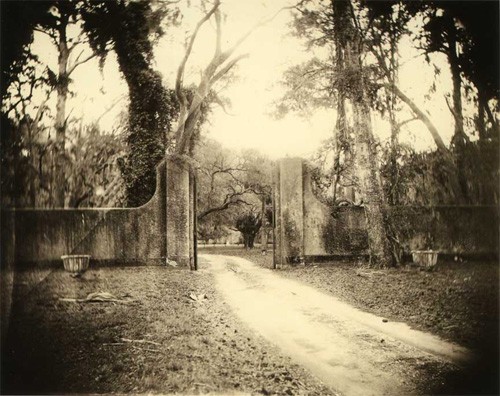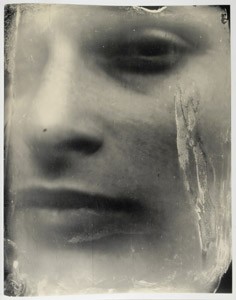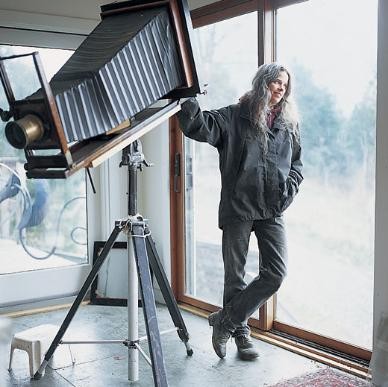Sally Mann: Photographic Poet
An Evocative Lecture at Museum of Fine Arts
By: Mark Favermann - Nov 20, 2008
In 2001, Time Magazine called Sally Mann America's Best photographer. She is at least one of the best currently working. Her body of work is at once narrative and abstract. There is a terrible beauty to much of her work. She has been criticized for frankness but celebrated for honesty. Her work is incredibly poetic transforming seeming clichés into layered evocations of place, memory or personality. Her style is personal while the work is universal.
Oddly, even though full of energy, death becomes her. In the last few years, several of her series been about death. Mann sees death as life reinforcement, underscoring what will be by what has been. In describing her work, she references a spectrum of writers including Proust, Kerouac and Conrad. She is at once literary as well as visual. Her work doesn't just illustrate but embraces atmosphere, history, life cycles, and true communication.
On November 20, Mann presented her work to a capacity crowd at the Museum of Fine Arts in Boston. She eloquently spoke of her personal pieces and creative process. She uses a huge, 19th Century, boxy camera with bellows that incorporates a wet collodion process. It is a technique begun in 1851 and used by Matthew Brady during the Civil War. She works with this 8x10 format camera behind a curtain with glass plates coated in silver nitrate. Exposure time is a minimum of five minutes. This approach gives Mann's work an old fashioned, rather 19th Century quality. There is an intrinsic fragileness to the process that allows for imperfections and controlled surprises. Each print image is unique.
She has photographed feral town children and her own children, sometimes in extreme close-up, Civil War battlefields, rural and untamed places in the deep South, corpses at a reserve for forensic study of decomposition, and the decaying the remains of her greyhound, Eva. Loss is a major theme in Mann's work. However, she views it as somehow life redemption, life reinforcement.
Mann was born in 1951, in Lexington, Virginia. Her father was the small town's primary doctor; her mother ran the small college (Washington & Lee University) bookstore. Sally's education and parents were rather unusual. Her parents were quite liberal for a conservative, Shenandoah Valley, Virginia town. After attending The Putney School, in Vermont, she went to Bennington College but later graduated from Hollins College (now University) in Virginia with a BA in English and a master's in writing. Though I didn't actually know her, I used to see her walking barefoot around the campus when I was an undergraduate at Washington & Lee in the late 1960's. She then was a Southern flower child. Her background in English literature and writing studies have continued to greatly inform her career as a photographer.
In the 1970's, Mann's first job was at W&L where her boss suggested that she photographically document the construction of the new law school building, Lewis Hall. The Lewis Family were major art collectors for a time in the 70's and 80's. Mann's first one-woman show was at the Corcoran Gallery of Art in Washington, D.C. This gave notice of her quality as a photographer. She exhibited surrealistic images of the new law school's construction process.
Mann's work has been controversial. Her second published collection, At Twelve, Portraits of Young Women (1988), was critically heralded. It captured the confusing emotions and emerging sexual identities of girls becoming women; childhood's innocence lost to puberty. In 1992, her second collection set off a firestorm of controversy. Immediate Family was a series of portraits of her three young children, some nude, others visually ambiguous. Some writers called the work child pornography while other critics championed the pictures. Her work was criticized and even demonized in the US and internationally. Major articles and reviews were written about the work. This notoriety placed Mann solidly on the photographic and art world maps.
She works in series. Some have taken years and others have, and will, take decades. A number of series have dealt with the beauty of decay and death. Created with a personal, at times, rather dark edge, these pictures are much more than any straightforward documentation. These are travels through human and natural history with a sense of place and even displacement. There is often a sense of primeval connection.
Currently, she is working on a decades long series of nude portraits of her husband of over 35 years. This is unusual on two counts. First, there are no great examples of wives photographing their husbands in long term series. Secondly, he has Muscular Dystrophy, a muscle wasting disease. Both husband and wife are very brave to do this. The couple lives on a 400 acre farm in Rockbridge County, Virginia outside of Lexington.
The photographer has been featured in cover stories in the New York Times Magazine and in almost every major art publication. Even her most controversial work has continued to be shown and collected by major American art museums including the Metropolitan Museum of Art , The Corcoran Gallery of Art, and the MFA in Boston among others. She shows at the prestigious Gagosian Gallery in New York. A documentary about her artistic life, What Remains, has been shown at film festivals and on PBS.
Mann is not the only world-class artist from little backwater Lexington, Virginia. Painter Cy Twombly also grew up there. His father was the athletic director of Washington & Lee University. He now spends part of the year in Italy and part of the year in Lexington. Maybe, there is something in the water there?
Sally Mann's presentation at the MFA was full of content, personally nuanced, and graceful. Her descriptions of the work are extremely literary. Her words as well as her images are evocative, layered, and often surprising. Her prose is often poetic as are her wonderful and eerily beautiful photographs. She is one of the greats.






